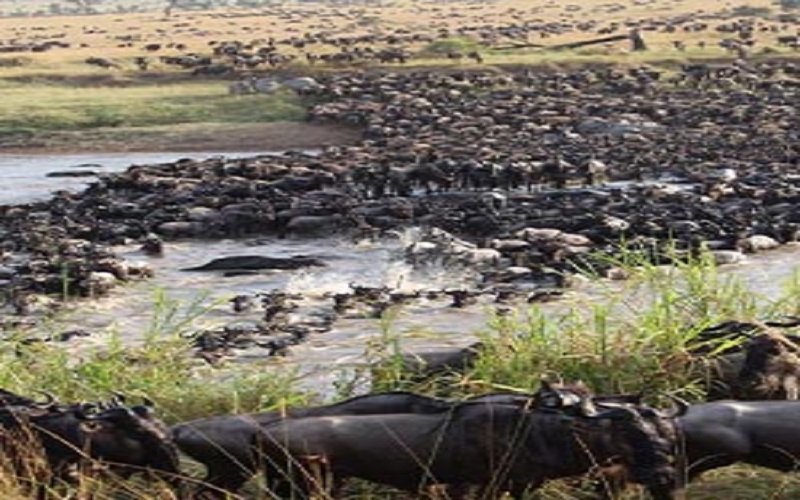
Best Serengeti Locations to Witness Great Migration in 2026-2027
Discover the best Serengeti locations to witness the Great Migration in 2026–2027. Learn when and where to see wildebeest, zebra, and predator action for an unforgettable safari.
Customer Reviews
4.9
Best Serengeti Locations to Witness the Great Migration in 2026–2027
The Great Migration in Tanzania’s Serengeti National Park is one of the most incredible natural wonders on Earth. It’s a breathtaking event where over two million wildebeest, zebra, and gazelle move together in a never-ending circle, crossing rivers, battling predators, and following the rhythm of the African rains.
If you are planning your first safari to Tanzania in 2026–2027, there’s no better experience than seeing this migration with your own eyes. From the dramatic river crossings to the quiet moments of mothers nursing their young on green plains, every second in the Serengeti feels alive raw, emotional, and unforgettable.
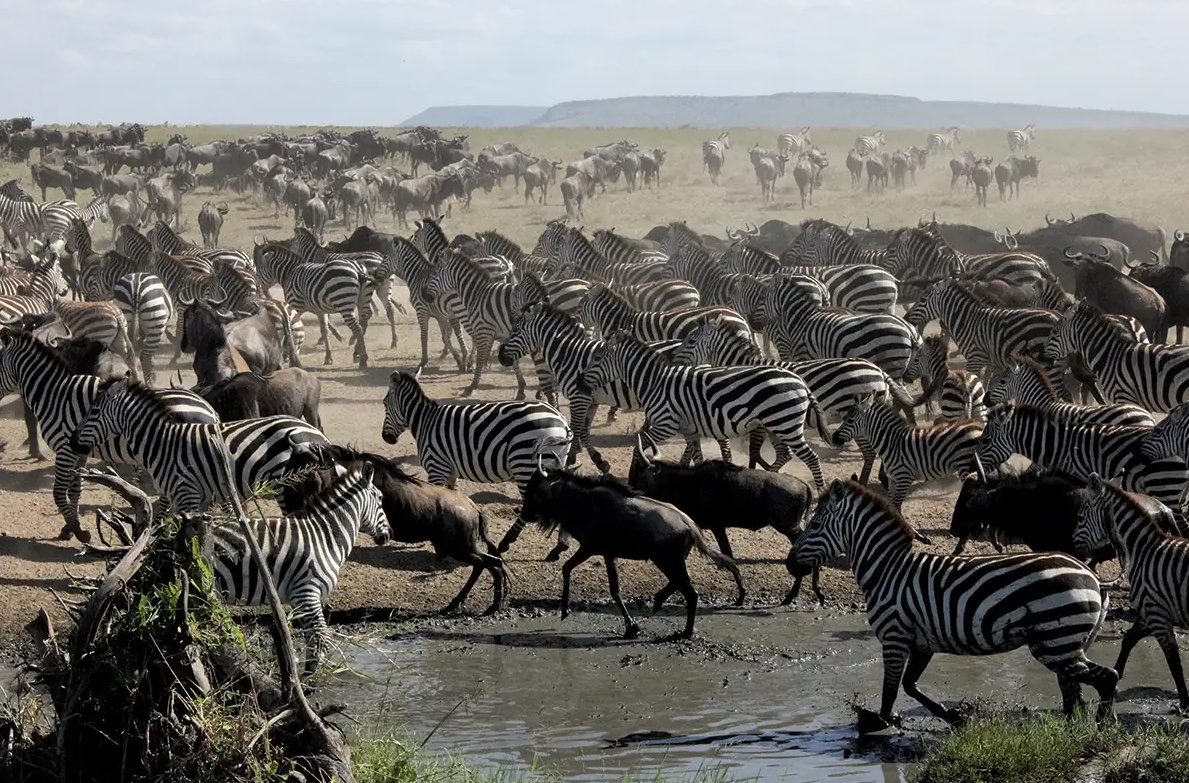
This guide explains when and where to visit in the Serengeti to see the Great Migration at its best. You’ll also learn what makes each region special, how to plan your trip, and what to expect during each season.
Understanding the Great Migration
The Great Migration is not just an event; it’s a continuous, circular journey that repeats every year. Around 1.5 million wildebeest, 200,000 zebras, and thousands of gazelles move across the Serengeti ecosystem in search of fresh grazing land and water.
Their journey covers nearly 1,000 kilometers (620 miles), and along the way, they face challenges like predators, droughts, and dangerous river crossings. But this movement is vital it keeps the ecosystem healthy and supports countless other species that depend on it.
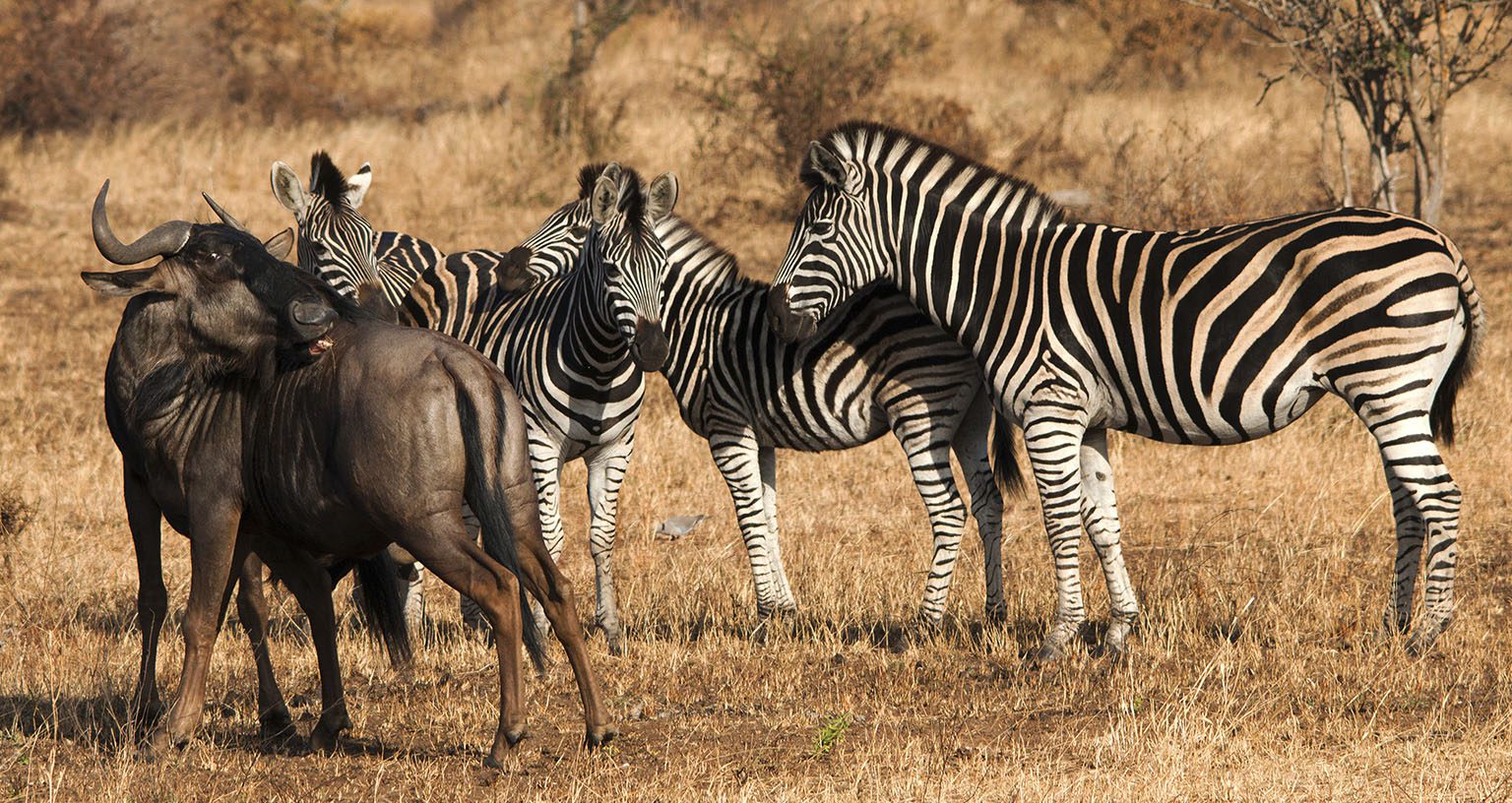
The migration follows the rains and the growth of green grass. Since rain patterns can shift slightly each year, the timing may vary, but the general cycle remains the same. Understanding this pattern helps travelers choose the best place and time to visit.
The Migration Journey Through the Serengeti
The Serengeti is divided into regions, each offering a unique experience depending on the time of year. Let’s follow the migration month by month and see where the action happens.
Southern Serengeti (December – March) – The Calving Season
Best for: Newborn animals, predator sightings, and dramatic wildlife action
From December to March, the migration settles in the Southern Serengeti, mainly around the Ndutu region and the northern Ngorongoro Conservation Area. The flat plains here are covered in short, green grass, perfect for grazing and spotting predators.
This is where half a million-baby wildebeest are born in just a few weeks especially in February. It’s a heartwarming yet emotional time, as life and death unfold side by side. You’ll see calves take their first steps, mothers protect their young, and predators like lions, cheetahs, and hyenas constantly on the hunt.
Photographers love this season because of the soft light, dramatic skies, and endless plains dotted with wildlife.
- Top locations: Ndutu Plains, Kusini, and the southern parts of Serengeti National Park.
- Best lodges/camps: Ndutu Safari Lodge, Lake Masek Tented Camp, Serengeti Pioneer Camp.
- Tip: Stay at least 3–4 days to enjoy both the predator action and the beautiful landscapes.
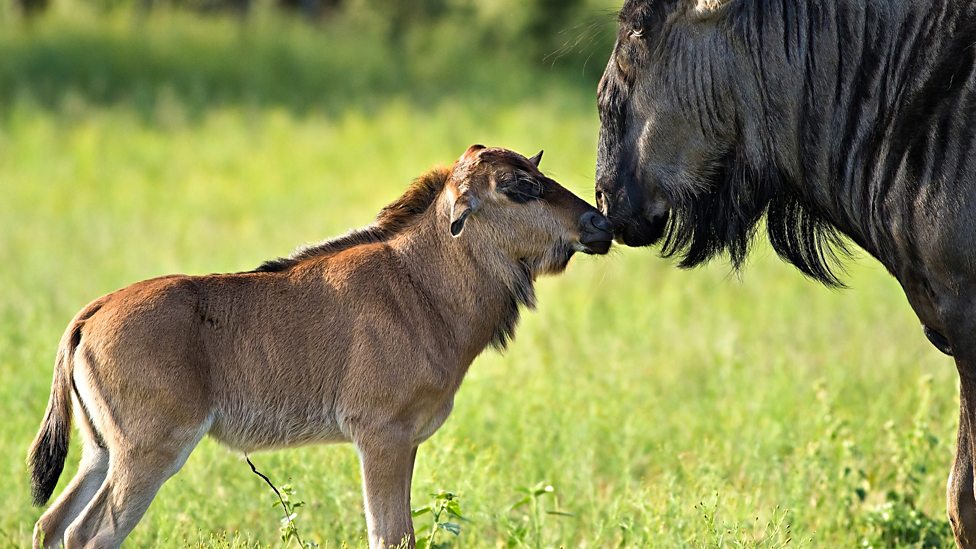
Central Serengeti (April – June) – Green and Peaceful
Best for: lush scenery, fewer tourists, and relaxed game drives
As the rains end, the herds start moving north through the Central Serengeti, also known as the Seronera Valley. This area is the heart of the park and remains a fantastic wildlife-viewing region year-round.
The grasslands turn vibrant green, attracting elephants, giraffes, and big cats. The herds spread out, resting and feeding before their long journey toward the rivers in the west.
Because this is a shoulder season, there are fewer tourists, prices are lower, and you’ll often have whole landscapes to yourself.
- Top locations: Seronera Valley, Moru Kopjes, and the plains around Makoma Hill.
- Best lodges/camps: Serengeti Serena Safari Lodge, Kubu Kubu Tented Camp, and Lemala Ewanjan.
- Photography tip: This is a great time for wide-angle shots with dramatic skies and green grass.
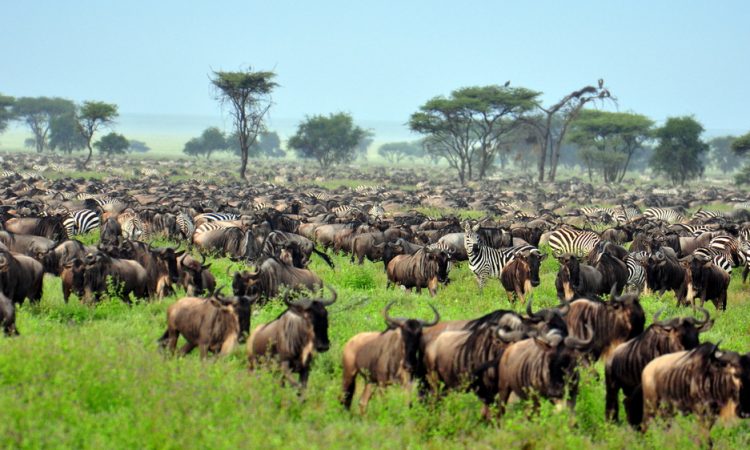
Best for: Smaller, intimate river crossings and crocodile encounters
By late May and June, the migration reaches the Western Corridor, following the Grumeti River. Here, the wildebeest face one of their most dangerous challenges: crossing crocodile-infested waters.
This part of the migration is less crowded than the northern river crossings but equally thrilling. You’ll see tense moments as herds gather on the riverbanks, unsure when to cross. Massive Nile crocodiles wait silently in the muddy water nature’s raw drama at its best.
The area also has dense woodlands and open savannahs, offering sightings of giraffes, topis, and even chimpanzees in nearby parks like Mahale.
- Top locations: Kirawira, Grumeti Reserve, and Ruwana Plains.
- Best lodges/camps: Kirawira Serena Camp, Mbalageti Serengeti, and Grumeti Hills.
- Tip: Combine this area with a short flight to Rubondo Island for chimp tracking and lake safaris.
.jpg)
Northern Serengeti (July – October) – The Iconic Mara River Crossings
Best for: Classic migration drama and world-famous river crossings
Between July and October, the herds move into the Northern Serengeti, around Kogatende and the Mara River. This is the most famous and dramatic part of the migration where thousands of wildebeest and zebra make the perilous crossing into Kenya’s Maasai Mara.
The scene is unforgettable: massive herds gathering at the river’s edge, hesitating, then suddenly plunging into the water while crocodiles strike and the strong currents pull some away. On the other side, lions and hyenas await.
If you want to see the Great Migration at its peak intensity, this is the place to be. It’s also one of the most scenic parts of the Serengeti, with rolling hills, river valleys, and dramatic sunsets.
- Top locations: Kogatende, Lamai Wedge, and Mara River areas.
- Best lodges/camps: Sayari Camp, Lemala Kuria Hills, and Mara River Tented Lodge.
- Tip: Stay at least 4–5 nights because river crossings are unpredictable and depend on rain and herd movement.
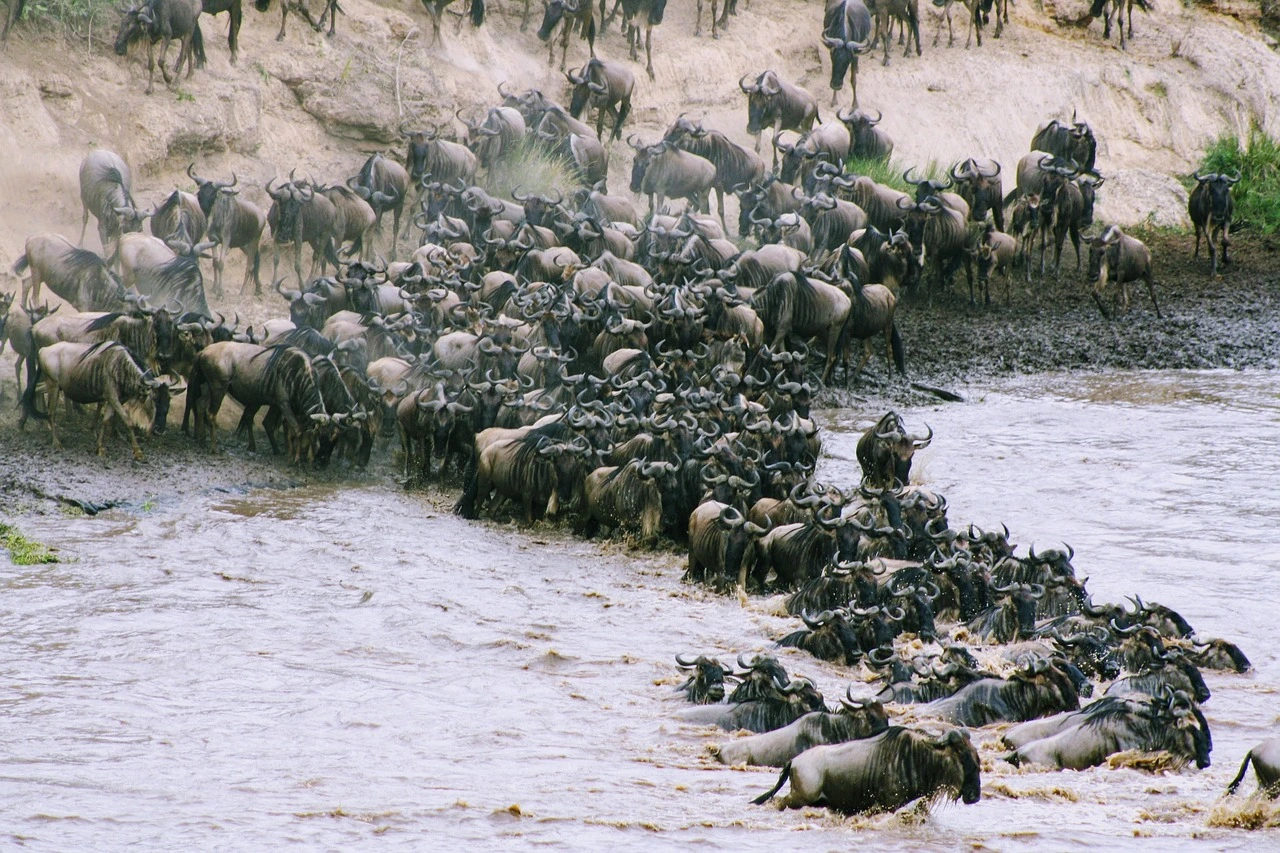
Eastern Serengeti (November – Early December) – The Quiet Return South
Best for: Solitude, cheetah sightings, and scenic drives
As the rains return in November, the herds begin their long journey south again through the Eastern Serengeti, especially the Namiri Plains. This region is famous for its big cat population especially cheetahs, which thrive on the open grasslands.
It’s a peaceful time to visit, with fewer tourists, soft green colors, and the sense of life starting its cycle again.
- Top locations: Namiri Plains, Gol Kopjes, and Soit Le Motonyi.
- Best lodges/camps: Namiri Plains Camp, Dunia Camp, and Ewanjan Tented Camp.
- Tip: Perfect for travelers who love quiet, intimate safaris with excellent predator sightings.
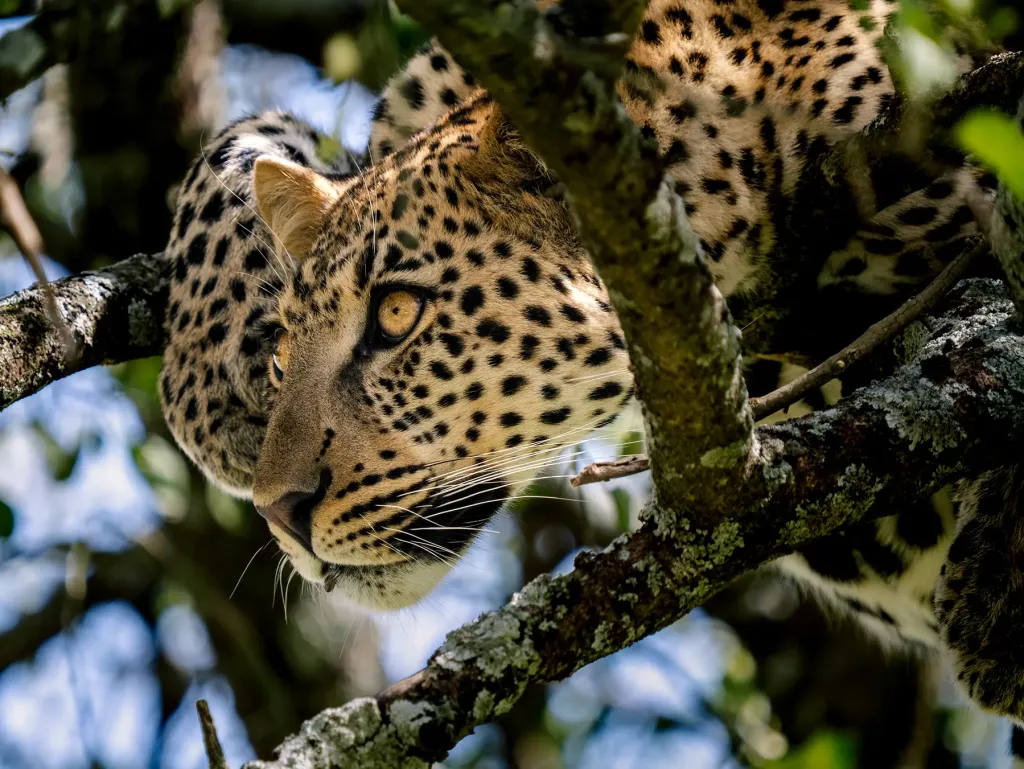
Accommodations in the Serengeti National Park
Choosing where to stay in the Serengeti is an important part of planning your safari. Your accommodation can shape how close you feel to the wildlife and how comfortable your trip will be.
The Serengeti offers a range of options for every type of traveler and budget:
Luxury Lodges:
These provide high-end comfort with private rooms or suites, modern bathrooms, and excellent dining. Many lodges have viewing decks, pools, and open-air lounges where you can watch wildlife from a distance. Luxury stays are perfect for travelers who want comfort after long days of game drives.
Mid-Range Tented Camps:
These are a popular choice for most safari travelers. They offer comfortable tents or simple cabins with private bathrooms, good food, and guided game drives. Mid-range accommodations often balance comfort and adventure, giving you an authentic safari experience without overspending.
Budget Campsites and Basic Lodges:
For those who prefer adventure or are traveling on a budget, the Serengeti has campsites and simple lodges. These accommodations may have shared facilities, minimal furnishings, and fewer amenities, but they provide an authentic connection to nature. Staying close to the plains means you can hear the sounds of wildlife at night.
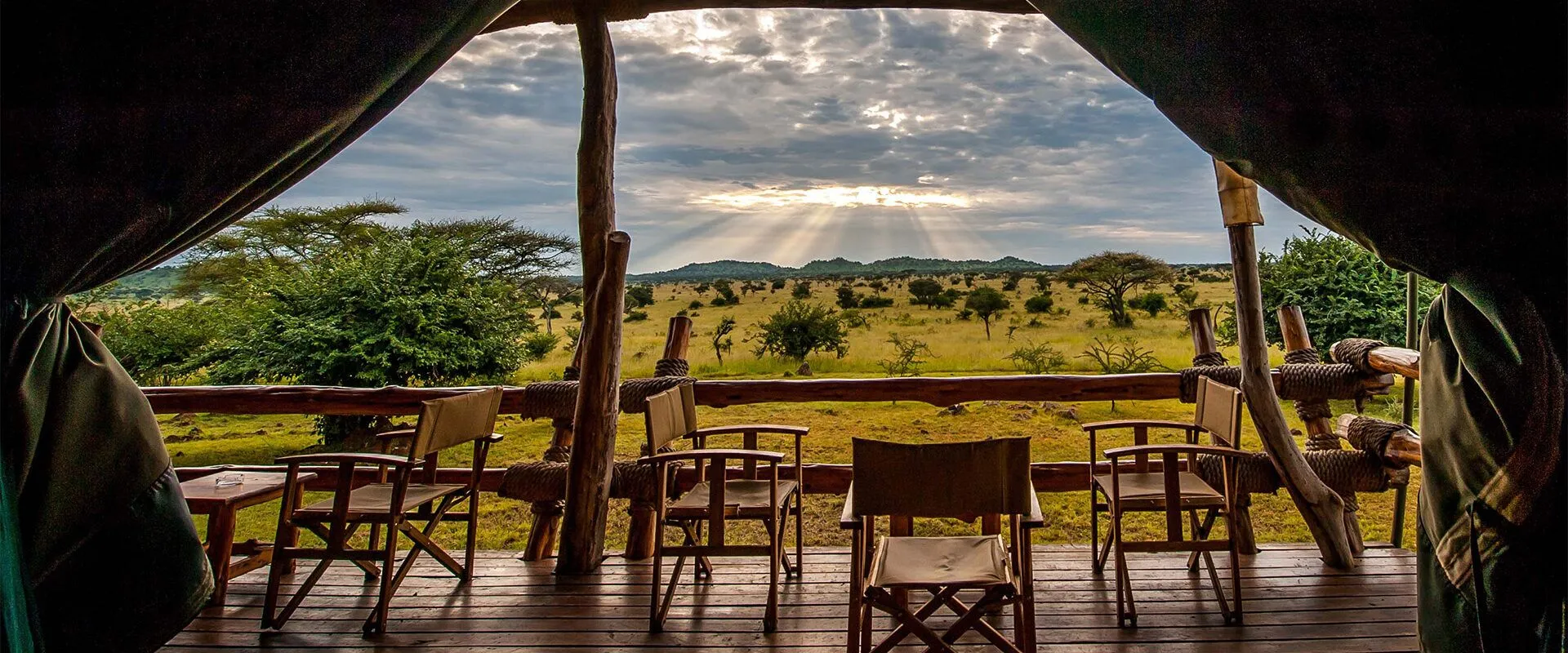
General Tips for Choosing Accommodation:
- Stay close to the migration route during your travel dates to maximize wildlife sightings.
- Consider how much comfort you need versus how adventurous you want your experience to be.
- Check what’s included: meals, park fees, transfers, and game drives. Some accommodations handle everything for you, which makes your safari easier.
- Think about your travel group: families, couples, or solo travelers may need different types of accommodation.
No matter what type you choose, the Serengeti’s accommodations are designed to make you feel part of the wilderness. From waking up to sunrise over the plains to watching animals graze nearby, every stay offers a unique and unforgettable experience.
Best Time to Visit for the Great Migration
While the migration happens all year, the best months depend on what you want to see:
Experience | Best Time | Best Area |
Calving Season (Births & Predators) | December – March | Southern Serengeti (Ndutu) |
Grumeti River Crossings | May – July | Western Serengeti |
Mara River Crossings | July – October | Northern Serengeti |
Green Season & Scenery | April – May | Central Serengeti |
Quiet Return Migration | November | Eastern Serengeti |
If it’s your first time visiting, July–October is the most popular choice because of the Mara River crossings. However, if you prefer peace, lower costs, and baby animals, February–March in Ndutu is just as magical.
Tips for Planning Your Migration Safari
- Book Early: Camps near the migration hotspots fill up months in advance, especially in the north.
- Use a Local Tour Operator: Tanzanian safari companies know the land and can track the herds accurately.
- Be Flexible: The herds move based on rain, so travel plans may shift slightly.
- Fly Between Regions: Bush flights save time and let you see more in less time.
- Pack Smart: Bring layers for cool mornings and hot afternoons, insect repellent, sunscreen, and a camera with extra batteries.
- Stay 3–5 Nights: The migration moves fast staying longer increases your chances of witnessing major events like river crossings.
Extend Your Serengeti Great Migration Safari
To make your trip even more memorable, consider adding other Tanzanian highlights:
- Ngorongoro Crater: Home to black rhinos and dense wildlife.
- Tarangire National Park: Known for elephants and baobab trees.
- Lake Manyara: Great for flamingos and tree-climbing lions.
- Zanzibar: Perfect for a beach escape after your safari.
- Mount Kilimanjaro: For adventurous travelers looking to add a mountain challenge.
Some of our Selling Packages in 2026-2027 for Great Migration
3-Day Serengeti Migration Safari (Short Adventure)
Arrive at Kilimanjaro or Arusha airport and transfer to your lodge or tented camp. Day one: travel to the Southern Serengeti or Ndutu region, depending on the season, and enjoy an afternoon game drive spotting wildebeest, zebras, and predators. Day two: full-day game drives follow the herds across the plains, with picnic lunches and opportunities for photography. Day three: an early morning game drive captures the sunrise and wildlife activity before returning to Arusha or Kilimanjaro for departure. Ideal for first-timers with limited time.
7-Day Serengeti Migration Safari (Classic Safari Experience)
Begin with arrival at Kilimanjaro or Arusha, then transfer to the Serengeti. Over the next seven days, explore multiple regions of the park depending on the migration’s location. Enjoy morning and afternoon game drives, watching wildebeest crossings, predator hunts, and baby animals in the calving season. Optional hot-air balloon rides offer aerial views of the herds. Nights are spent at lodges or tented camps close to the migration routes. Include a rest day to relax, enjoy local cuisine, and soak in the breathtaking savannah scenery. Perfect for a full safari experience.
10-Day Serengeti & Northern Circuit Safari (Extended Adventure)
Arrive at Kilimanjaro or Arusha and transfer to Tarangire or Lake Manyara for your first game drives among elephants, giraffes, and flamingos. Travel through Ngorongoro Crater to witness the Big Five in a single day. Spend several days following the Great Migration across the Serengeti, with morning and afternoon game drives capturing river crossings and calving herds. Optional hot-air balloon rides provide stunning aerial views. Conclude with a visit to Maasai villages or a short Zanzibar beach stay for relaxation. Nights spent in lodges or tented camps close to wildlife hotspots.
14-Day Luxury Northern & Southern Circuit Safari (Ultimate Adventure)
Start at Kilimanjaro or Arusha, then explore Tarangire and Lake Manyara with morning and afternoon game drives. Visit Ngorongoro Crater to see the Big Five, then fly or drive to the Serengeti to follow the Great Migration, witnessing river crossings and predator-prey interactions. Include optional hot-air balloon rides and guided walking safaris. Continue to Ruaha or Selous for remote wilderness experiences. Finish with relaxation in Zanzibar on white-sand beaches. Stay in luxury lodges and tented camps, enjoy gourmet meals, private guides, and front-row views of Africa’s most spectacular wildlife.
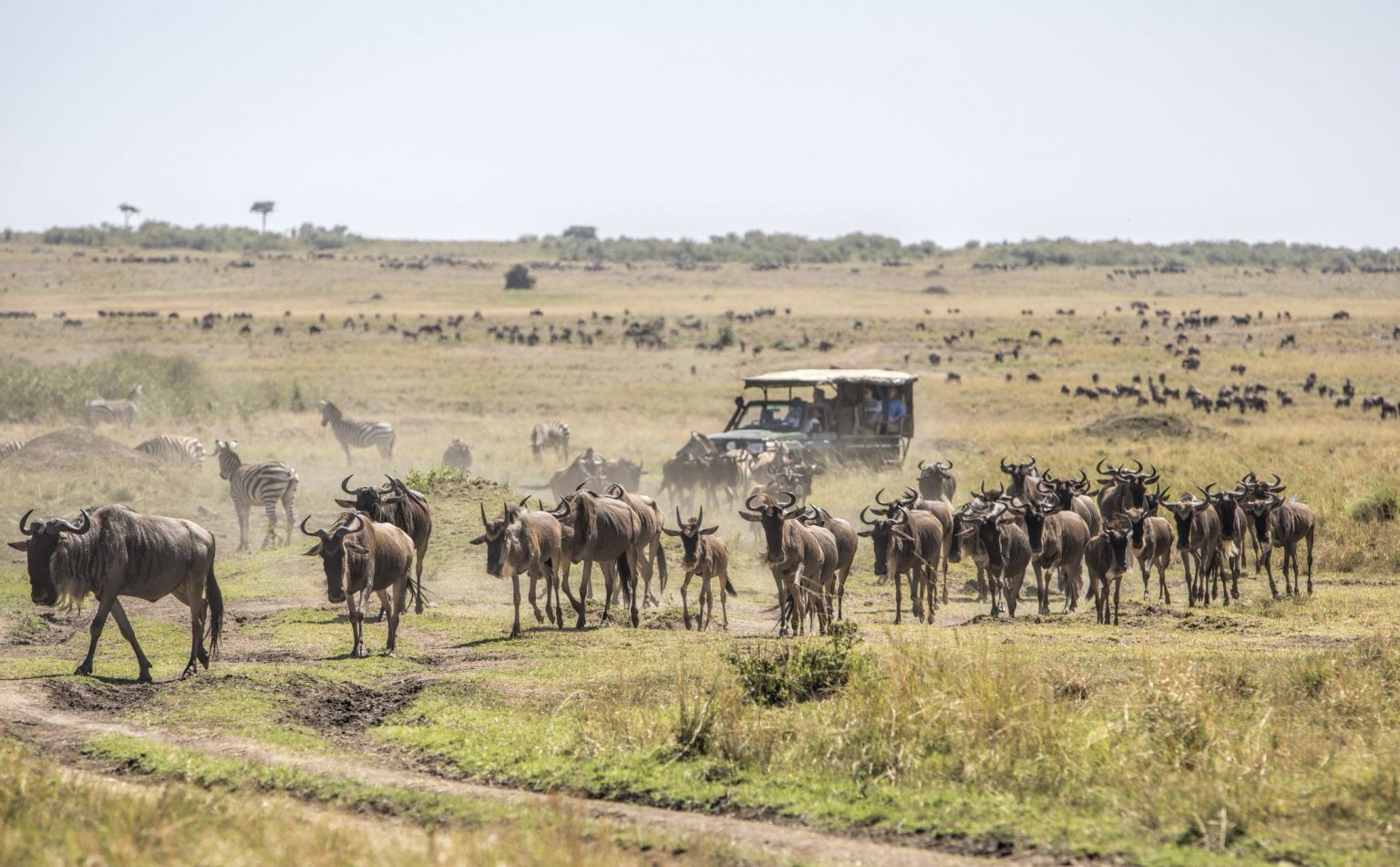
Whether you stand on the grassy plains of Ndutu during calving season or on the cliffs above the Mara River watching a dramatic crossing, the Serengeti will touch your heart in ways words can’t describe.
A trip to see the Great Migration in 2026–2027 is not just another vacation; it’s a life-changing journey into the wild soul of Africa.
So, start planning early, pack your sense of wonder, and prepare to witness one of the greatest shows on Earth the Great Migration in Tanzania’s Serengeti.